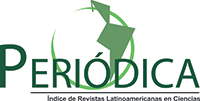RA V12 N3, Message from the Editor in Chief (September - December 2022)
Keywords:
--Abstract
JOURNAL OF THE LATIN-AMERICAN ASSOCIATION OF QUALITY CONTROL, PATHOLOGY AND RECOVERY OF CONSTRUCTION
http://www.revistaalconpat.org
With great satisfaction, we present the third issue of the twelfth year of the ALCONPAT Journal.
The objective of Revista ALCONPAT (RA) is the publication of citable production (basic or applied research, and reviews), documentary research and case studies, related to the topics of our association, that is, quality control, pathology, and recovery of the constructions.
This V12 N3 edition begins with a work from Brazil, where Joaquín Humberto Aquino Rocha and colleagues carry out a systematic review of the literature of the last five years on the use of cellulose nanofibers (NFC) in cement-based compounds. The main forms of production and dispersion are presented, with emphasis on the effect on the behavior of cement-based materials. The study considered the influence of NFC on properties in the fresh and hardened state: rheology, hydration, compressive strength, flexural strength, fracture energy, among others. NFCs have beneficial effects on mechanical properties; however, more research is still needed to optimize NFC production and pretreatment processes, establish relationships on the durability of compounds with NFC, and identify the possible environmental impacts of their use.
In the second paper, from Brazil, Marcus Luiz Alves dos Santos Costa and colleagues present and discuss the use of industrial solid waste in terms of how to improve the mechanical properties of cement composites. For this, the incorporation of "crushed" granite powder and marble powder in the manufacture of cement-based composites was evaluated, partially replacing the natural fine aggregate at levels of 50% and 100%. To achieve this, characterization tests of the aggregates were carried out, in addition to the evaluation of the axial compression resistance of the specimens. The results showed that the mixtures containing 50% recycled aggregate give the material a compressive strength of 29.09 MPa, that is, 4% higher than the reference mixtures, the results being satisfactory, demonstrating the viability of recycled aggregates on concrete pieces.
The third paper in this issue is from Mexico, where Josefa de los Angeles Paat Estrella and colleagues evaluate electrochemical realkalization at different times and current intensities in accordance with the provisions of the UNE-EN-1504, NACE-SP0107 and NMX- C-553-ONNCCE in previously carbonated reinforced concrete structures, determining the degree of realkalization, pH and half-cell potential every 7 days for 28 days. A pH recovery was achieved with respect to time and current intensity, obtaining Ecorr values lower than -350 mV, which according to the ASTM C876-15 standard, correspond to a 90% probability of corrosion. However, it was the NMX-C-553-ONNCCE-2018 that presented potential without reaching the region of overprotection, without the risk of producing hydrogen and brittleness in the steel.
In the fourth article from Brazil, Camila G. Luz Nunes and colleagues aimed to optimize the production of hot mix asphalt using asphalt rubber. For this, the mechanical performance of asphalt mixtures produced with different binders was evaluated: commercial rubber asphalt (AC08), rubber asphalt 10% (AC10) and 15% (AC15) of rubber residues and conventional asphalt (PEN 50-70). For the composition of these mixtures, the optimum asphalt content was defined by the Marshall method. To carry out the mechanical tests, specimens molded with Marshall and Superpave compactors were tested. From the results obtained, it was found that the mixtures with AR08 and AR10, compacted with Superpave, presented the best mechanical performance. However, the AR08 binder is already available on the market, which facilitates its use in paving works.
The fifth article, by José Luis Pérez-Díaz and colleagues, comes from Mexico and evaluated the corrosion risk of steel by using carbon steel/stainless steel internal galvanic sensors with an external Cu/CuSO4 electrode. The sensors were used to monitor the macrocell potentials and currents of prismatic reinforced concrete specimens, with water-cement ratios of 0.4 and 0.6, immersed in a 5% NaCl solution for 18 months. The results of the potentials showed a good correlation between the two reference electrodes, being able to evaluate the corrosion of the system. Furthermore, the electrochemical noise technique supports the effect by chloride ions. Therefore, galvanic sensors can be considered for implementation in the monitoring and evaluation of the state of corrosion risk in reinforced concrete structures.
The sixth work in this issue is written by Danilo Pereira dos Santos and Maiara Feliciano dos Santos from Brazil. This work analyzes the impact of corrosion on the global stability of reinforced concrete columns, evaluating the effectiveness of the stiffness reduction criteria proposed by ABNT NBR 6118: 2014. With the analyses, using finite element models that reproduced the behavior of the materials, it was defined that corrosion causes the intensification of the second-order global stresses in the structure. However, in critical situations, loss of balance in the cross section resulted in structural failure even before loss of stability. The study was carried out both through a nonlinear geometric analysis and through the application of the yz coefficient, where it was concluded that the subsequent addition of rheological effects can lead to a configuration that goes beyond the limits proposed by the Brazilian standard.
In the seventh paper, from Mexico, Joel A. Moreno Herrera and colleagues evaluated the change in the flexural behavior of reinforced concrete beams. Beams without corrosion and beams with electrochemical parameters associated with a high level of corrosion were considered. The electrochemical parameters considered were corrosion rate, electrical resistivity and chloride concentration. The beams were tested under incremental vertical loads until failure. Cracking patterns, yield and maximum loads, yield stiffness and displacement ductility of the beams are presented. Based on the analysis of these structural parameters, it is concluded that the bending behavior of the beams with and without corrosion was similar.
The article that closes the edition is by G. H. Teixeira from Brazil and colleagues, who show the application of the GDE (Degree of Deterioration of the Structure) and GUT (Gravity, Urgency and Trend) methodologies, quantifying the pathological manifestations and determining the points of greatest maintenance need. Thus, a quantitative perspective was applied with the application of the aforementioned methodologies and after the inspections of the building and a visual analysis with photographic records, annotations and mappings, the methodologies were applied and it was obtained that the majority of the pathological manifestations that occur in the the structure of the building is caused by humidity, giving rise to efflorescence, stains or infiltrations. In this way, this work defined the points that need priority, guiding the measures that can be taken later. The methodologies proved to be effective and important for decision making.
It is important to mention that the ONCyTS of Brazil and Mexico have kept Revista Alconpat in their indexes of Quality Scientific Journals. In particular, in Mexico, the Alconpat Journal has been consolidated at an international level and the National System of Researchers (SNI) already considers it as a valid product for the promotion and permanence of its members. This has been a great achievement, the product of everyone's efforts, authors, reviewers and editorial committee. Similarly, it is important to mention that Revista Alconpat already belongs to the Directory of Open Access Journals (DOAJ), which is a definitive step to apply to new indexes. Alconpat is also making a significant financial investment so that all its issues are being marked in XML-Jats so that it can be evaluated in more prestigious indexes. Congratulations and our thanks to all.
We are sure that the articles in this issue will constitute an important reference for those readers involved with questions of evaluation and characterization of materials, elements and structures. We thank the authors participating in this issue for their willingness and effort to present quality articles and meet the established deadlines.
On behalf of the Editorial Board
Pedro Castro Borges
Editor in Chief
Downloads
References
--
Downloads
- DOWNLOAD COMPLETE ISSUE-PDF
- HTML (EN)
- XML (EN)
- EPUB (EN)
- DESCARGAR NÚMERO COMPLETO - PDF (Español (España))
- HTML (ES) (Español (España))
- XML (ES) (Español (España))
- EPUB (ES) (Español (España))
- BAIXAR NÚMERO COMPLETO - PDF (Português (Brasil))
- HTML (PT) (Português (Brasil))
- XML (PT) (Português (Brasil))
- EPUB (PT) (Português (Brasil))
Published
How to Cite
Issue
Section
License
_______________________________
License in effect from September 2020
You are free to:
- Share — copy and redistribute the material in any medium or format for any purpose, even commercially.
- Adapt — remix, transform, and build upon the material for any purpose, even commercially.
- The licensor cannot revoke these freedoms as long as you follow the license terms.
Under the following terms:
- Attribution — You must give appropriate credit , provide a link to the license, and indicate if changes were made . You may do so in any reasonable manner, but not in any way that suggests the licensor endorses you or your use.
- No additional restrictions — You may not apply legal terms or technological measures that legally restrict others from doing anything the license permits.
Notices:
You do not have to comply with the license for elements of the material in the public domain or where your use is permitted by an applicable exception or limitation .
No warranties are given. The license may not give you all of the permissions necessary for your intended use. For example, other rights such as publicity, privacy, or moral rights may limit how you use the material.

















.png)














